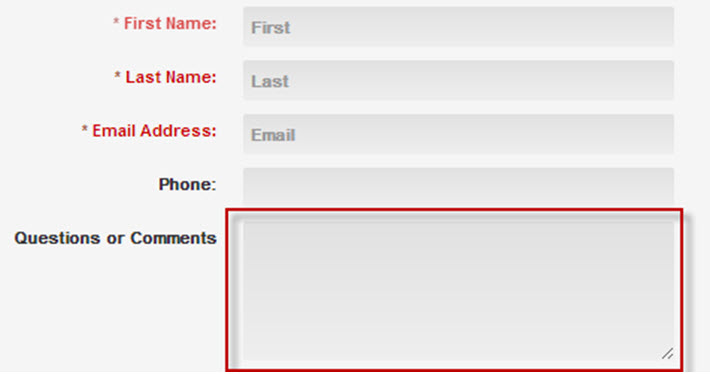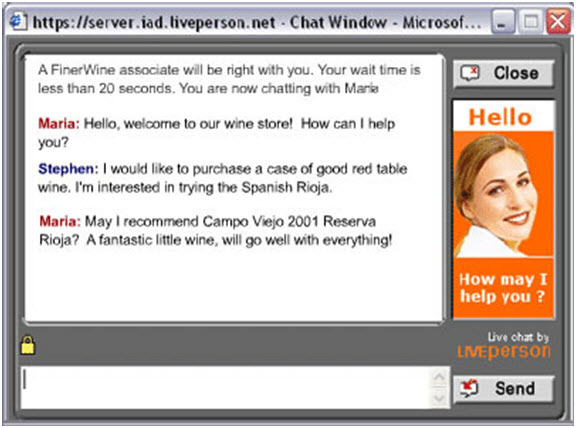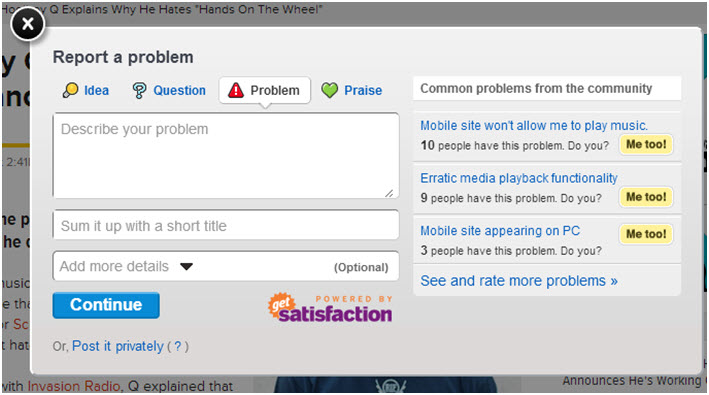Online Marketing: 4 sources of customer insight on your website
“The meaning of a test is to get a learning, not a lift.”
Chances are, you’ve heard the above from us before. At MECLABS, we often speak of online testing as a means to learn insights directly from the customer, prospect, visitor, etc.
Well, what if you could be overlooking areas of your website that can give you valuable customer insight without testing anything at all. Would you be interested in using this information to improve your online operations and maybe increase conversion? I know I would. Could you use this information to inform future test ideas and test plans?
You could. And probably should.
While the following information may not seem revolutionary – or even unique, for that matter – you might be surprised by just how many large corporations fail to take such readily available information into account, even though it is supplied to them directly from the customer or prospect.
There are numerous places on your website that reference the customer. But, the areas we need to focus on are the ones in which the customer provides direct feedback, in their own words.
1. Comment boxes in form fields
 Everyone has seen the ubiquitous form field box on contact forms across the Web, but who actually takes the time to fill these out? Depending upon the complexity of the product and your traffic levels, there could be quite a few.
Everyone has seen the ubiquitous form field box on contact forms across the Web, but who actually takes the time to fill these out? Depending upon the complexity of the product and your traffic levels, there could be quite a few.
Now, if you take those few comments you receive daily and extrapolate them over a lengthier period – let’s say three months – you might begin seeing trends in the types of comments or questions your customers are asking.
Yes, this would take some analysis from a staff member, but the payoff could be huge. Just remember, the analysis doesn’t have to be complicated, and this type of quick analysis can be applied across the other areas.
You can use any program you like, but take the time to quickly go through the comments and categorize those matching or sharing a similar root problem or theme.
Once you have completed the analysis phase, see if any comment groups emerge as a significant portion of the overall sample. If so, then you have likely identified an area of friction that could be addressed on the website to potentially aid in conversion.
How you go about addressing the issues should also be considered. Will a simple copy improvement suffice, or is there a larger issue with the website or process needing to be addressed? It’s ultimately your decision, but before rewriting all your Web copy, remember you’re working with a fraction of your overall traffic. There is no need to revamp areas that don’t need it.
2. Customer service chat transcripts
 Despite varying degrees of usefulness, online customer service chat functionality is now a mainstay of website interaction. So, why not use these interactions to inform your online operations? Most chat platforms offer some form of output of the agent’s conversation, typically in the form of a “chat transcript.”
Despite varying degrees of usefulness, online customer service chat functionality is now a mainstay of website interaction. So, why not use these interactions to inform your online operations? Most chat platforms offer some form of output of the agent’s conversation, typically in the form of a “chat transcript.”
As with the comment analysis above, categorize common questions and issues, and take the time to analyze a sample of the data provided. Test improvements based upon these groups, and hopefully find ways to alleviate customer frustration via site functionality, rather than the chat representative.
3. Feedback tabs
 You may notice feedback tabs on a variety of websites across different industries. They serve the exact purpose the name implies. Once again, dependent upon traffic levels and taken over time, these tabs could provide you with insightful data about your customer that could be tested directly on the page.
You may notice feedback tabs on a variety of websites across different industries. They serve the exact purpose the name implies. Once again, dependent upon traffic levels and taken over time, these tabs could provide you with insightful data about your customer that could be tested directly on the page.
Feedback tabs let users submit feedback and support requests without leaving your site. In many cases, they also have the ability to:
- Provide instant answers or feedback to users, from others’ inquiries
- Collect user data to tickets so you can route them to the right people, respond faster and reduce unnecessary dialogue between your company and its users
- Increase user engagement by allowing users to see, comment and vote for positive answers or feedback
- Capture email addresses and other viable user data
4. Offline customer service efforts (call centers)
Ideally, customer service would link both your online and offline efforts, and help create the “ultimate” customer service experience. Many companies have incorporated interactive FAQs to reduce a company’s need for live representatives.
But, who is making sure your company responds to frequent phone inquiries effectively, and then communicating solutions to these inquiries via the website?
When reviewing call center transcripts, see if you can garner information, such as the following:
- Problems customers are noting, and if they are pointing to a trend
- Sources of confusion about your products or offerings
- Words or phrases used repeatedly
- Feedback on your marketing, and whether they seem to have a sense of your brand
If you are unsure of whether something is worth reporting, do so anyway. Even the seemingly smallest idea might trigger larger insights by those reviewing your data. Take the time to analyze the data your customers are providing and devise a test strategy that will allow you to measure their response to your efforts on the website and over the phone.
Related Resources:
Customer Relationship Management: Bring Finance into the CRM world
3 Ways GE Energy Gathers Customer & Prospect Relations Data to Maximize Marketing Efforts Globally
CRM How-to: Tactics on Marketing/IT alignment, database strategy and integrating social media data
Customer-centric Marketing: 7 triggers to engage customers and build loyalty
Categories: Online Marketing CRM, customer feedback, customer insight, Online Marketing, testing










As you stated, seemingly simple ideas, and yet they can make a huge difference. Thanks for the great read!
Taylor, another simple idea is to track frequently asked questions (if you have that section on your site).
The ones getting the most clicks could be an area where you’re not clearly communicating the answer on the site or could be turned into a valuable selling point.
@Matthew Hertzman
Thanks Matt,
That’s great advice. I think that falls under the theme of being creative with your analytics to derive additional customer insights.
You never know what you might learn.
You have touched the often ignored section of the website. Great Article
I accede with the customer insights you shared and they do play great role.